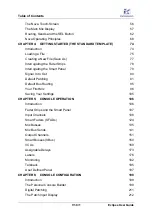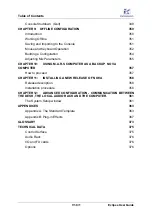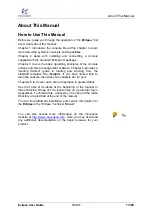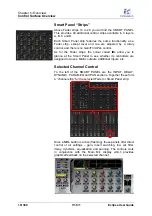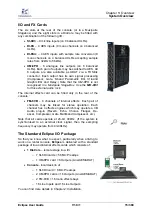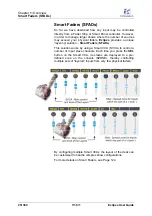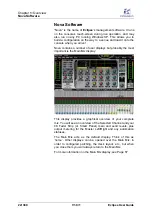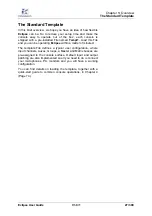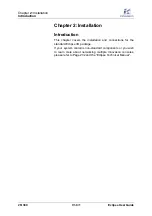
Chapter
1:
Overview
Control Surface Overview
Eclipse User Guide
V1.0/1
13/ 380
TB/Monitoring
To the right of the touch-screen are the console’s talkback,
monitoring and headphone controls.
Eclipse includes a stereo monitor bus which may be switched to
three different monitor outputs. In addition, a headphone output
is provided at the front of the console (1/4” jack).
The console’s
CUE
buttons may operate as AFL, PFL or Solo-
in-Place (SIP).
Talkback may be switched to three different outputs. A talkback
microphone input is provided at the front of the console (XLR).
Utilities
A second UTILITIES panel provides access to:
•
Off Line
Mode – you can use this mode to load Pages
to the console to check or modify settings without
affecting the current mix.
•
Play List
– the Play List manages Page automation. For
example, to change the order of Pages for the show, to
set crossfade times between Pages, etc.
•
Test
– routes the Oscillator test tone to the selected
channel.
•
D I/O
– displays the
PATCH DIRECT
grid.
•
Patch IN
– displays the
PATCH IN
grid.
•
Patch OUT
– displays the
PATCH OUT
grid.
Files/Auto
The FILES/AUTO panel provides buttons for saving settings
(Files) and managing console automation (Pages).
Trackball and Keyboard
To the left of the FILES/AUTO panel you will find a trackball
with left and right “mouse” buttons, and
OK
and
CANCEL
.
The console keyboard is located in a pull-out drawer at the front
of the desk. A second trackball is included with the keyboard for
convenience.




